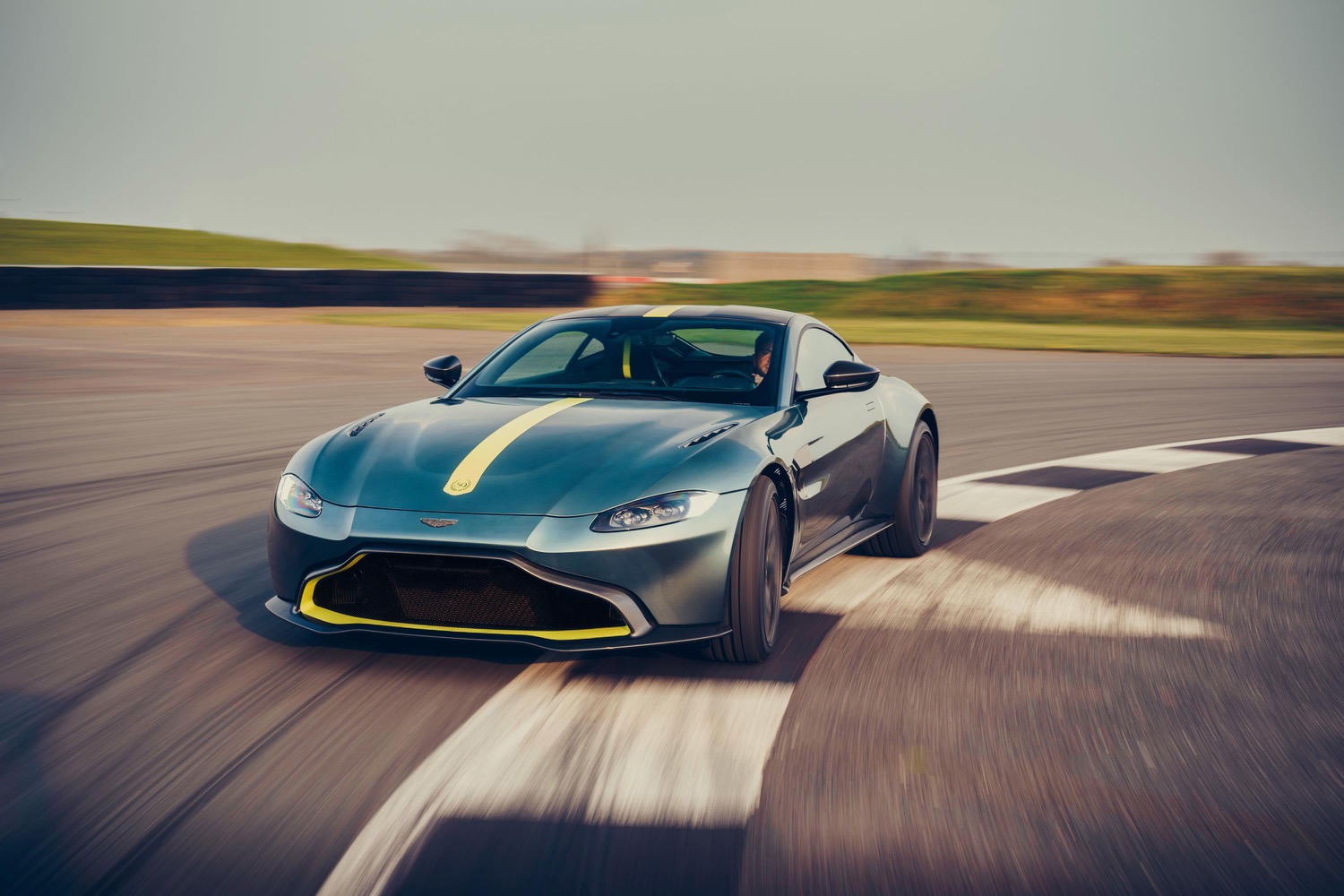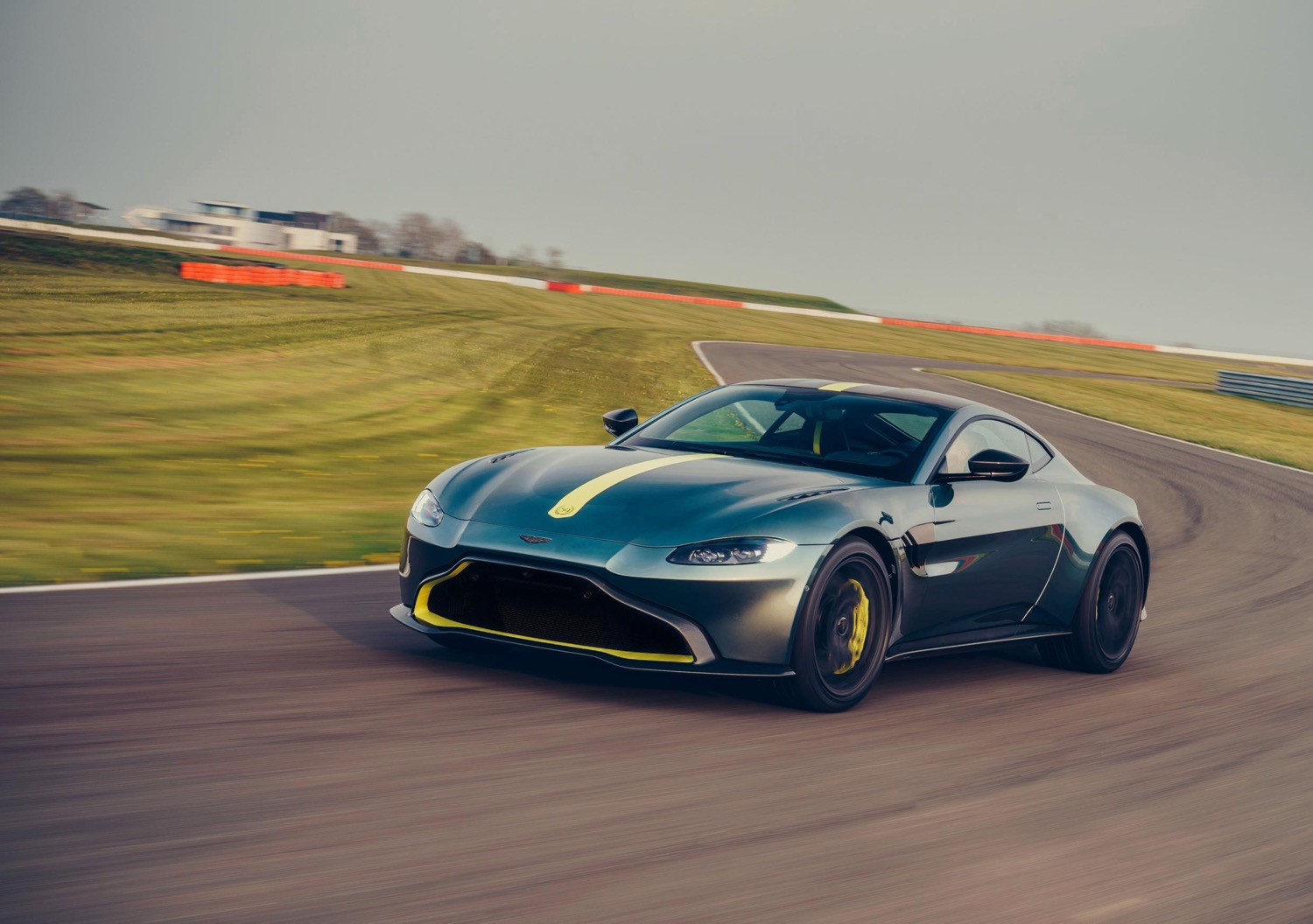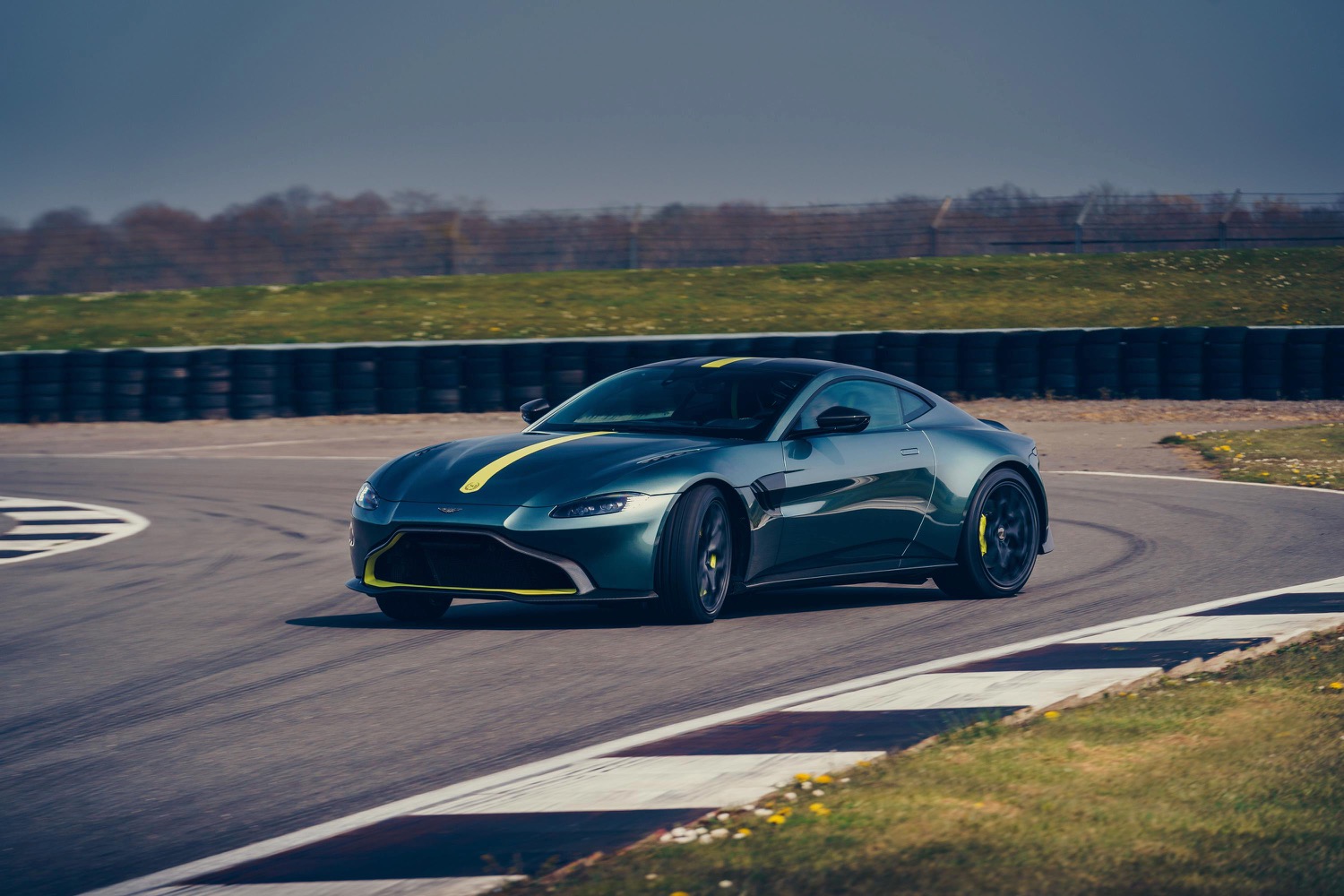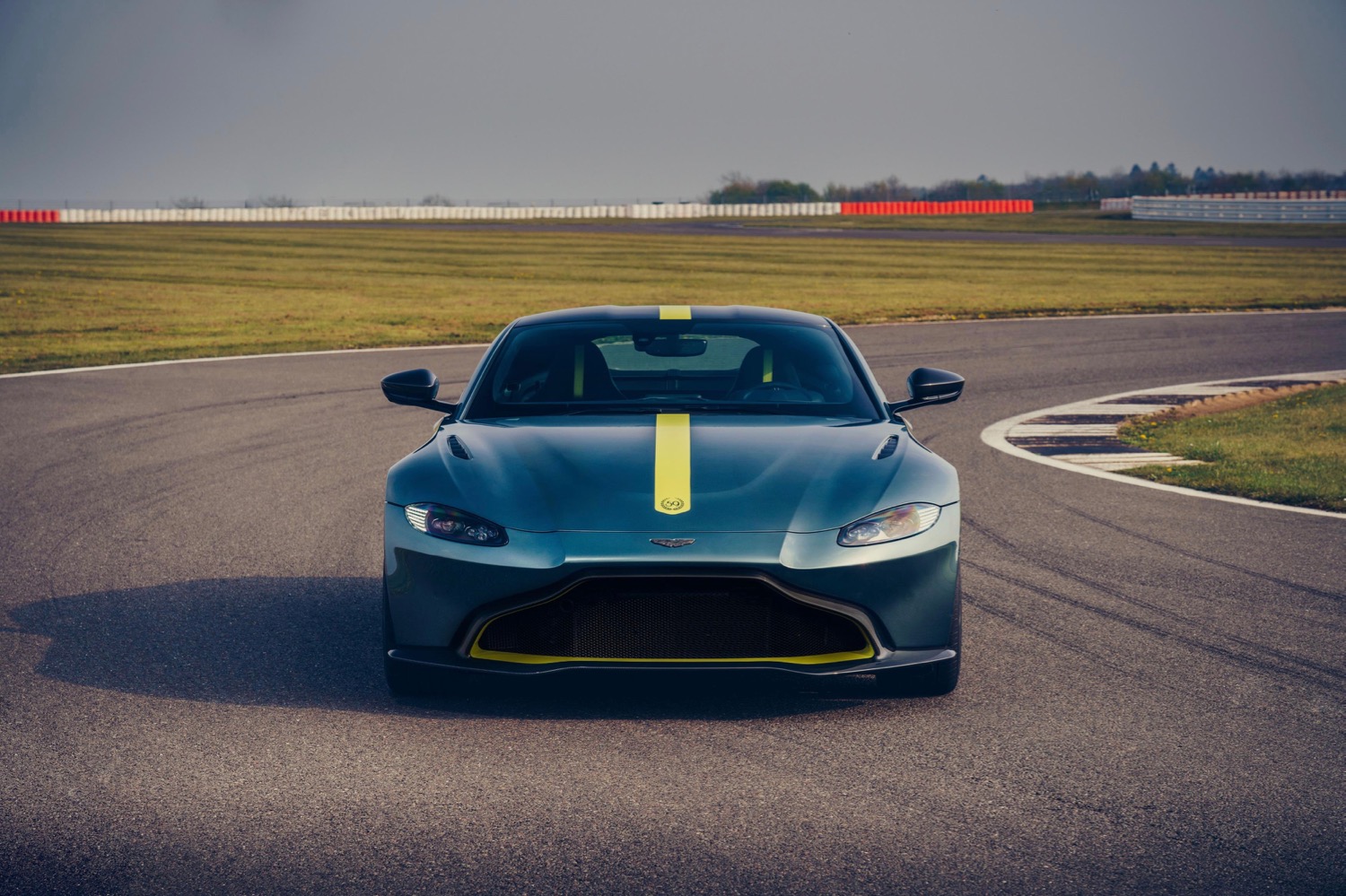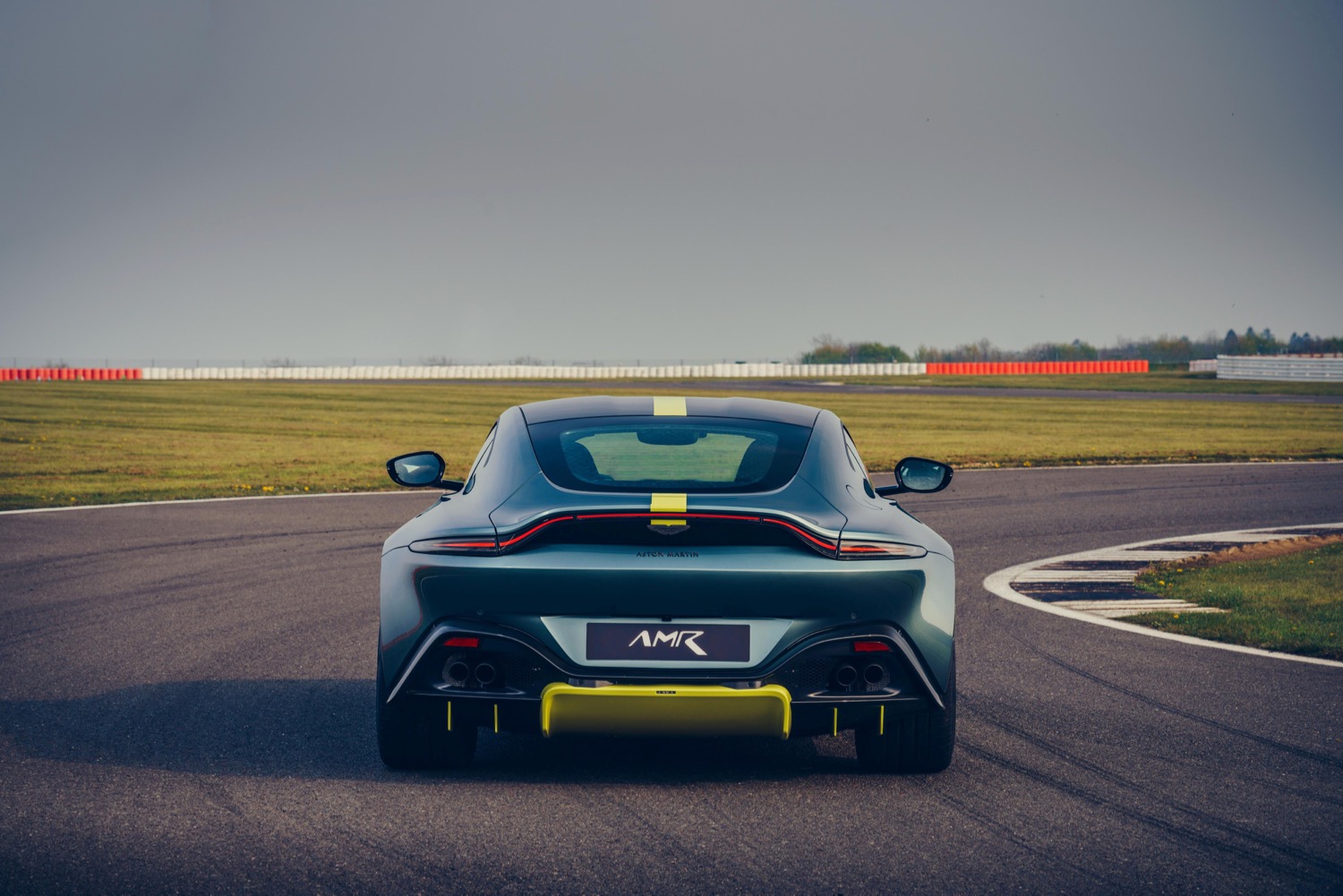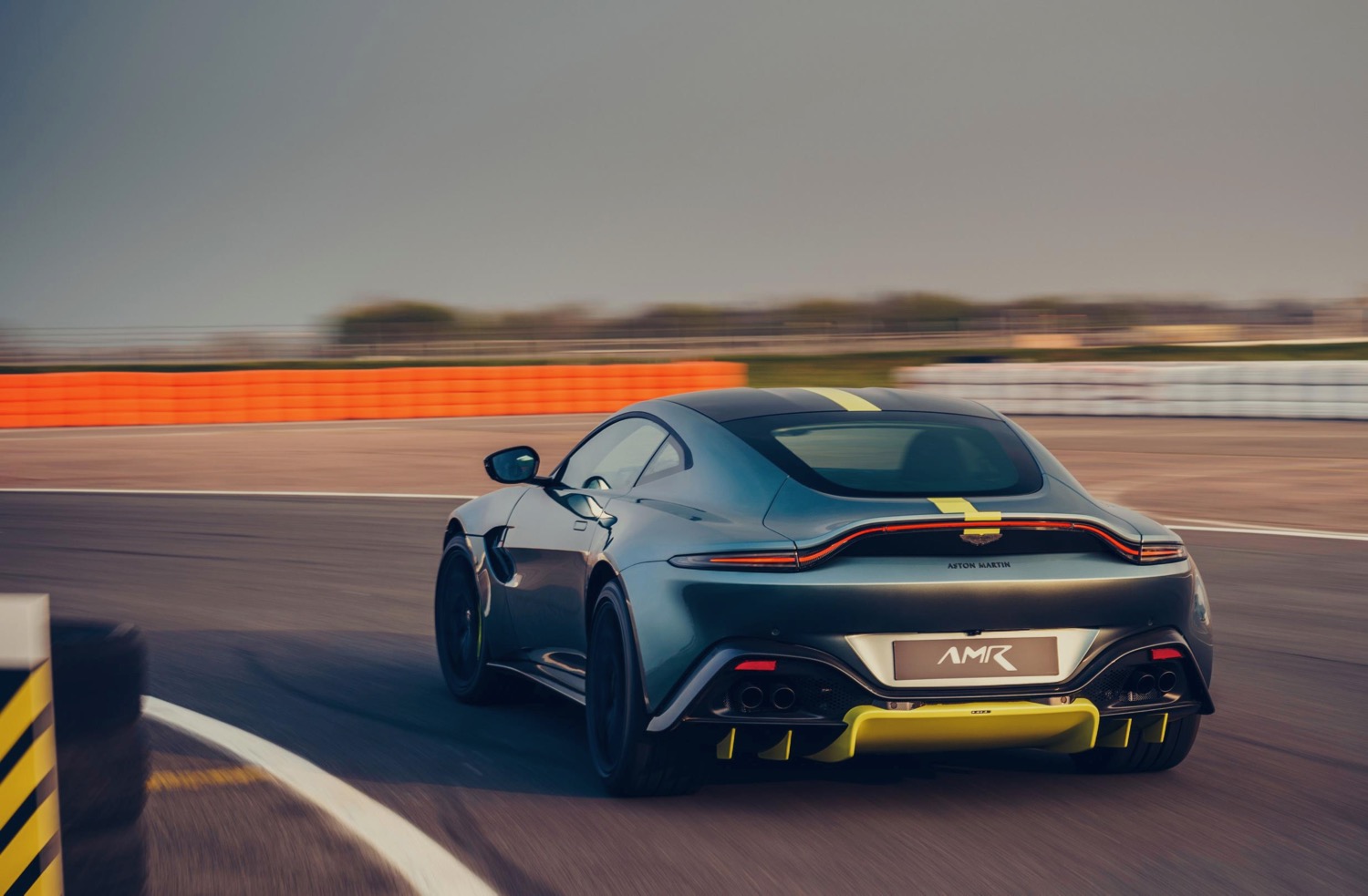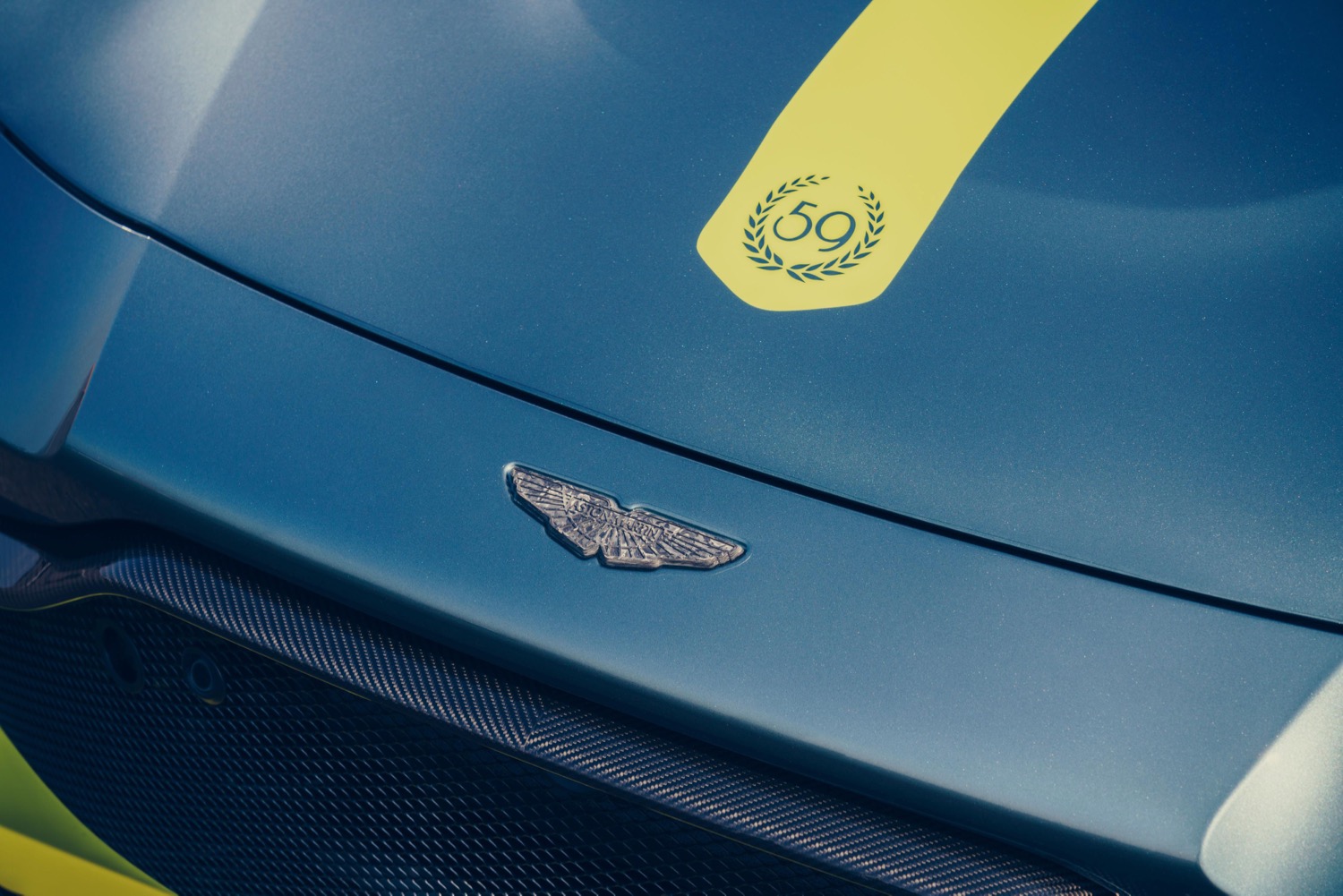Manual transmissions are disappearing from even the sportiest cars, but Aston Martin is keeping the faith. Aston is bringing back the manual for the limited-edition Vantage AMR. Just 200 of these cars will be made, but Aston also plans to offer a manual transmission on the standard Vantage beginning in 2020.
The Vantage AMR’s seven-speed gearbox is not just any manual. It features a “dogleg” configuration that moves first gear to separate slot of the H-pattern in order for the rest of the gears to be in sequence, making it easier for drivers to select the right gear at speed. The transmission also features AMshift, which automatically blips the throttle to smooth out shifts.
Switching to the manual transmission, as well as making carbon-ceramic brakes standard, saved 209 pounds over the standard Vantage, according to Aston Martin. The Vantage AMR also features a limited-slip differential.
The Vantage AMR features the same 4.0-liter, twin-turbocharged V8 as other versions of the Vantage. This is the first time the V8, which is sourced from Mercedes-AMG, has been coupled to a manual transmission. Aston Martin didn’t increase power, so output remains at 503 horsepower and 505 pound-feet of torque. The Vantage AMR will do 0 to 60 mph in 3.9 seconds, according to Aston. That’s 0.3 seconds slower than the eight-speed automatic Vantage, but the manual AMR should be more fun to drive. The Vantage’s top speed is 195 mph with either transmission.
Aston Martin plans to build 200 copies of the Vantage AMR, and 59 of those will be “Vantage 59” models, with a special livery of Stirling Green and Lime. The livery commemorates the 60th anniversary of Aston’s 1959 24 Hours of Le Mans win — the British automaker’s only overall win at the legendary French race. The remaining 141 cars will be available in Sabiro Blue, Onyx Black, China Grey, or White Stone.
Pricing for the Aston Martin Vantage AMR starts at $179,995, but the Vantage 59 will cost $204,995. Buyers who miss out on one of the 200 Vantage AMRs will still have an opportunity to get a manual transmission. Aston plans to offer the stick shift in the standard Vantage beginning in the first quarter of 2020, after all AMR models have been delivered.
Editors' Recommendations
- The best Aston Martins of all time
- How to drive stick in a manual transmission car
- 2021 Aston Martin DBX is perfect for a 00 agent with a family
- Aston Martin goes from four wheels to two with AMB 001 motorcycle
- Porsche’s updated 911 gets the one thing it was missing: A manual transmission
